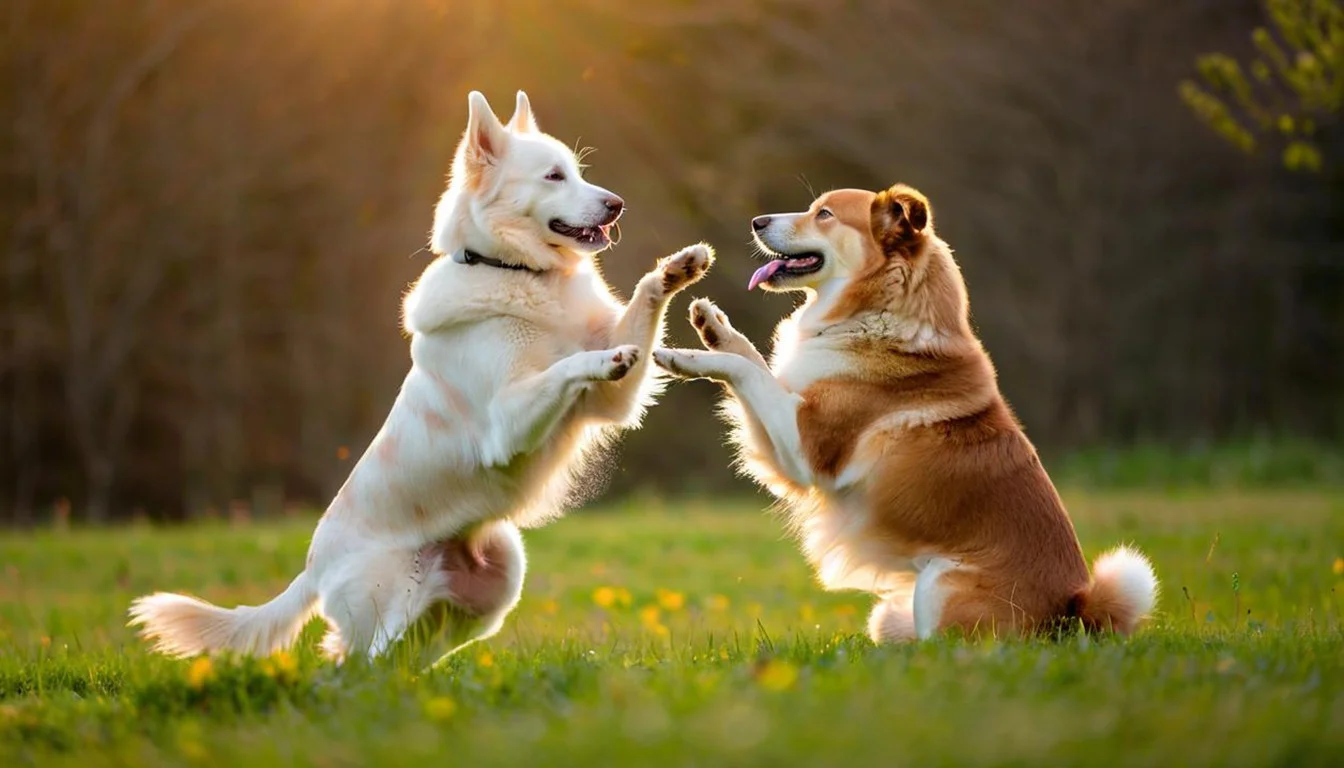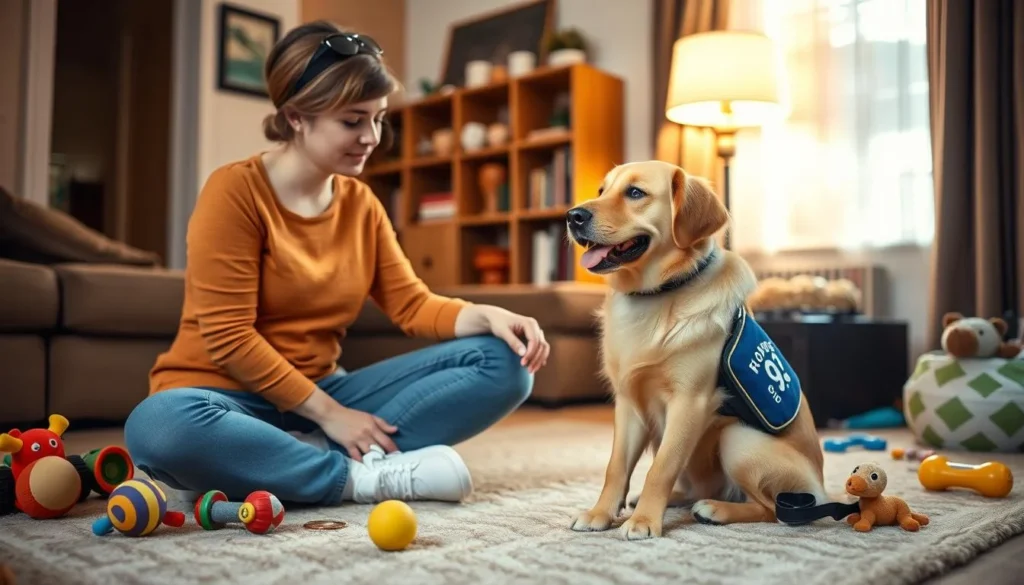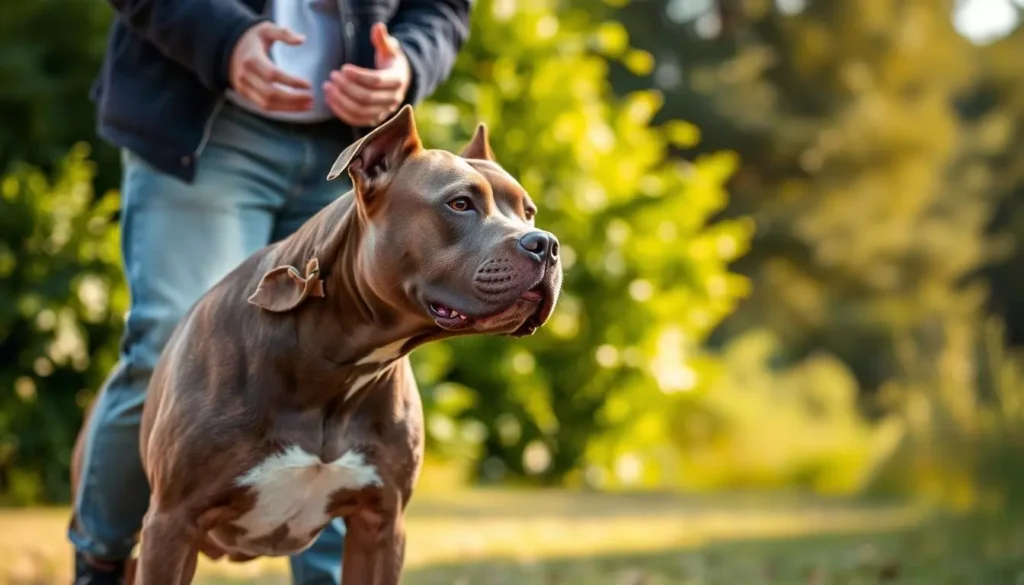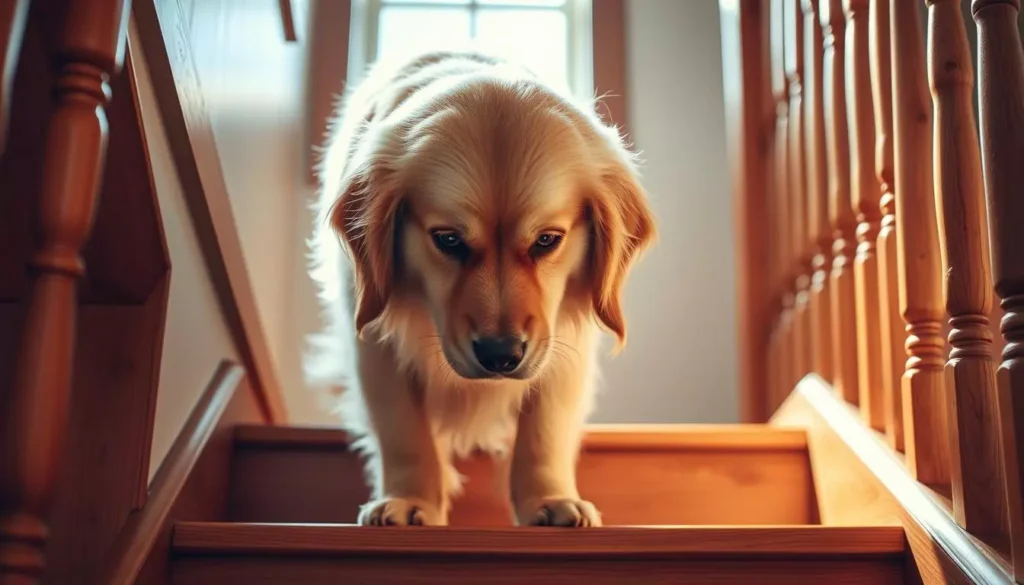There's a special bond between us and our dogs. It brings joy and companionship to our lives. But, when my two pups started growling at each other, I faced a challenge I never wanted to see.
The moment was scary and left me feeling helpless. It made me realize how important it is to know how to stop dog fights. This isn't just for our pets' safety but also to keep our homes peaceful.
Learning how to manage aggression and prevent fights is key. It's part of being a good pet parent. Let's explore the important steps together to keep our pets safe and our homes happy.
Key Takeaways
- Understanding the signs of impending aggression can help you act quickly.
- Creating a safe environment is essential for preventing dog fights.
- Training your dogs to coexist peacefully is a vital part of ownership.
- Being aware of common triggers for aggression can help mitigate risks.
- Immediate intervention techniques are necessary for stopping fights.
- Long-term behavior management strategies are crucial for peace among pets.
Understanding Dog Fights
Knowing why dogs fight is key for dog owners. It helps us prevent fights. Different reasons can lead to dog fights, like certain aggression types. Knowing what triggers fights helps us keep our dogs happy.
What Causes Dog Fights?
Many things can cause dog fights. One big reason is resource guarding. Dogs protect their things, like toys or food. Fear also plays a big part. A scared dog might fight to defend itself.
Frustration can also lead to fights. Dogs with poor emotional control might get angry. Understanding these reasons helps us prevent fights.
Common Triggers for Aggression
There are common things that make dogs aggressive. These include:
- Meeting new dogs or people
- Being surprised or cornered
- Not having enough toys or food
- Changes in their environment or routine
Knowing these triggers helps us avoid fights. By reducing exposure to these, we can keep our dogs and others safe.
Recognizing the Signs of a Fight
It's crucial for pet owners to know when dogs are fighting. Understanding the difference between play and aggression is key. By watching how dogs act, I can tell if they're playing or if there's trouble brewing. This helps me keep my dogs safe and happy.
How to Differentiate Between Play and Aggression
Dogs don't always show aggression. Sometimes, they just play. Signs of play include relaxed bodies, happy barks, and rolling around. But, stiff bodies, tight lips, and low growls mean trouble.
Knowing the difference helps me stop fights before they start.
Body Language Indicators of Stress
Watching for signs of stress is just as important as knowing play from aggression. I look for signs like unfocused eyes, tucked tails, and ears back. These show my dog might be scared or upset.
Quickly addressing these signs helps keep the peace and makes everyone happier.
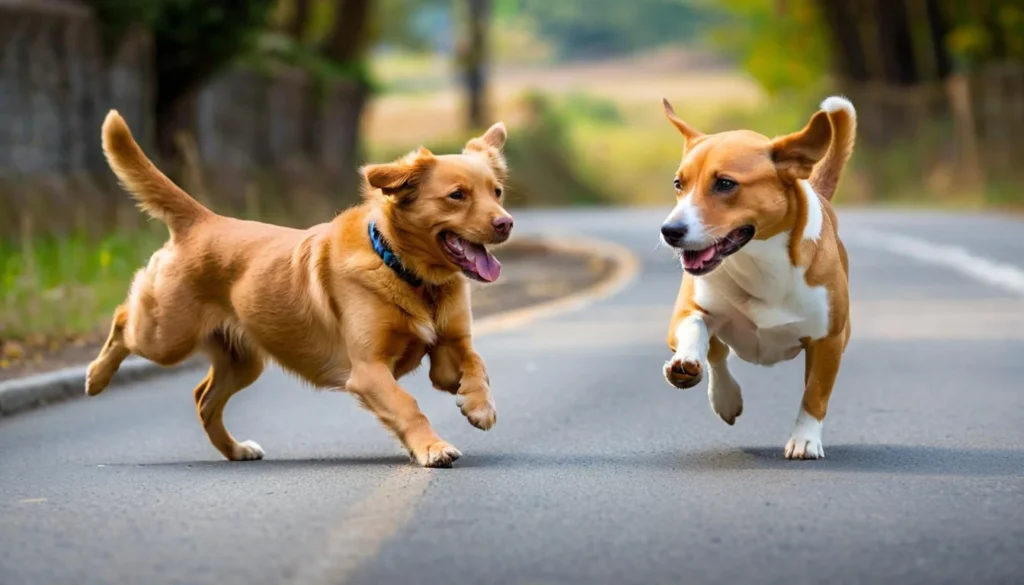
Prevention Strategies for Dog Fights
Keeping dogs from fighting is key to a peaceful home. I've learned that being proactive helps a lot. It's about setting rules and encouraging good behavior through training and watching them closely.
Creating a Safe Environment
Creating safe spaces for my dogs is important. Here's how I do it:
- Give each dog a place to go when they feel too much.
- Use gates or barriers to control when they meet.
- Keep toys and things they need organized to avoid fights.
These steps help my dogs feel safe and prevent fights. Watching their body language helps me step in early if needed.
Training Your Dog to Coexist
Training is crucial to stop dog fights. I use positive methods to teach good behavior:
- Socialize them early to build confidence.
- Teach them to follow commands.
- Have them play together under my watch to show them how to get along.
These methods help my dogs get along and feel secure. Regular training strengthens their bond, making our home peaceful.
Why Dog Fights Occur at Home
It's important for pet owners to understand why dogs fight at home. Living with more than one dog can lead to competition for space and resources. This competition can cause tension and make it key to manage their interactions and environment well.
The Role of Space and Resources
In homes with multiple dogs, each dog may try to show who's boss over space and resources. Not enough food, toys, or places to rest can cause fights. Setting up specific areas for each dog can help avoid fights. Watching how dogs interact during meals and play is also important to stop aggressive behavior.
Managing Multi-Dog Households
Managing dogs at home means knowing each dog's personality and needs. Each dog has its own comfort zones and things that upset them. Watching their body language helps spot stress or aggression early. Regular training helps keep the peace and strengthens the bond between pets.
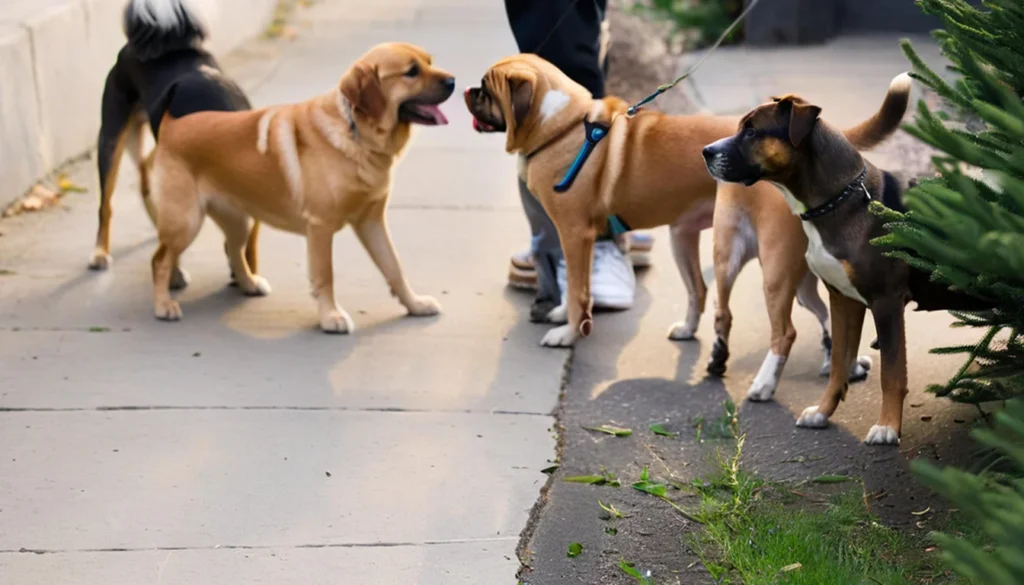
| Strategy | Description |
|---|---|
| Defined Spaces | Creating separate areas for feeding and resting to reduce competition. |
| Regular Training | Implementing training sessions to improve behavioral control and command response. |
| Monitoring Interactions | Keeping an eye on playtime to catch signs of aggression before they escalate. |
| Positive Reinforcement | Rewarding calm behavior and positive interactions among dogs. |
Stop Dog Fight: Intervening Safely
When a dog fight happens, my main worry is safety for everyone. It's key to be prepared and calm. Using distractions can help separate the dogs safely.
Step-by-Step Methods for Intervention
First, I keep a safe distance. I quickly check the situation to choose the best way to act. Here's what I do:
- I make a loud noise, like clapping or shouting, to get their attention.
- If I have one, I use a water spray bottle to distract them.
- I look for objects, like a blanket or stick, to use as a barrier.
- If I can't act directly, I call for help from others nearby.
Tools You Can Use During a Fight
Having the right tools is crucial for breaking up dog fights. I keep these tools ready:
- A sturdy leash to hold one dog after separating them.
- A whistle or air horn to get their attention.
- Water bottles for a sudden splash to distract them.
- Protective gloves in case I need to physically separate them.
Using these strategies and tools helps me intervene safely. This way, I can reduce harm and stress for all.
Breaking Up a Dog Fight
Seeing dogs fight is upsetting. It's important to act fast and safely. Knowing how to stop dog fights can keep everyone safe.
Safe Techniques for Separating Fighting Dogs
When dogs fight, there are ways to stop them without making things worse. The "wheelbarrow" method works well with a partner. Each person grabs a dog's back legs and walks them back while keeping a safe distance.
If you're alone, you can use a leash to catch a dog. You can also use cushions or chairs to keep dogs apart. This way, you can keep them from fighting while staying safe.
When to Seek Help from Others
It's best to have someone help you when dogs fight. Having another person can make it safer. They can distract one dog or help you keep the other one calm.
| Technique | Description | Best For |
|---|---|---|
| Wheelbarrow | Two people grab the dog's hind legs and walk backwards. | Effective with two individuals present. |
| Leash Lasso | Use a leash to lasso one of the dogs to prevent further aggression. | Effective for solo interventions. |
| Barriers | Use cushions or chairs to create a physical separation between dogs. | Useful when immediate physical separation is required. |
| Seek Assistance | Having another person assist can improve safety and control. | Always recommended in any fighting situation. |
Aftermath of a Dog Fight
Dealing with dog fights can be tough for pet owners and their pets. It's important to act fast to keep the dogs safe. First, I check for injuries, as even small wounds can get infected if not treated.
A quick check can stop bigger problems later.
Checking for Injuries
When I check for injuries, I look for bleeding, swelling, or odd behavior. If a dog seems scared or is limping, it might be hurt. I check both dogs carefully to catch any injuries.
Calming and Reassessing Your Dogs
Calming dogs after a fight is key to their emotional healing. Keeping them in the same spot helps them understand what happened. I reassure them with a soft voice to ease their stress.
This helps them heal and deal with any leftover anger. Taking care of their physical and emotional needs is crucial after a fight.
Long-Term Behavior Management
Managing dog behavior over time needs careful planning. It's key to use consistent training and positive rewards. This helps keep my home calm and reduces fights.
Using long-term strategies is crucial. It helps lower aggression and brings peace to my pets.
Training to Prevent Future Incidents
Teaching my dogs to get along is vital. I use commands like "leave it" and "come" to steer them away from fights. Regular activities, exercise, and socializing reinforce good behavior.
Consistency builds trust with my dogs. This makes future fights less likely.
Consulting Professional Help if Necessary
At times, I need extra help with my dogs' behavior. Dog trainers and behaviorists offer personalized advice. They help me understand my dogs' needs and develop effective training plans.
Their expertise helps me spot aggression triggers. This teamwork strengthens my behavior management plan. It makes our home safer for everyone.
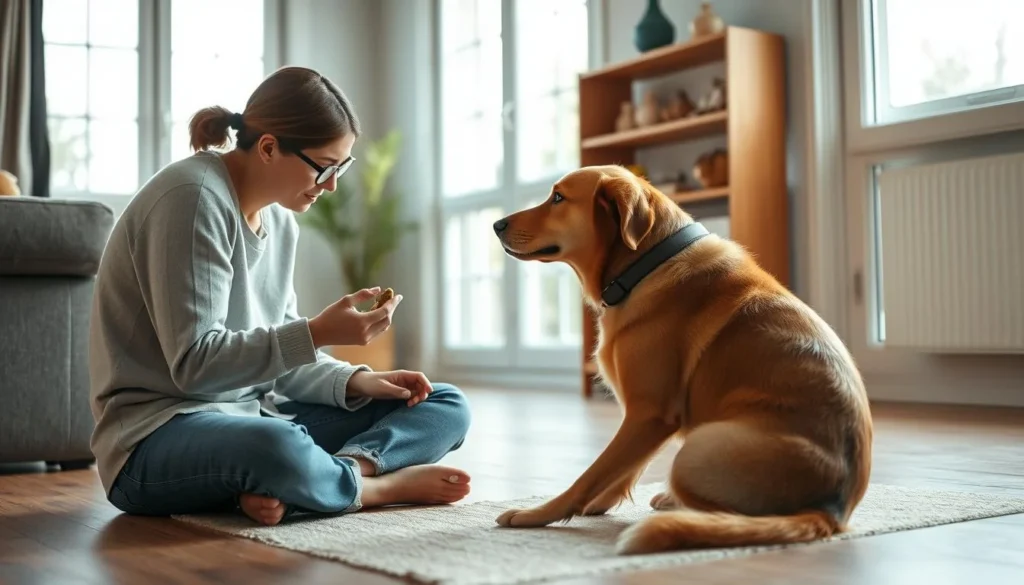
Living with Multiple Dogs
Having multiple dogs can be very rewarding. It brings joy and companionship into our lives. But, it also comes with its own set of challenges. It's important to establish a clear pack order to keep the peace.
By watching how they interact, I can manage their relationships well. This helps create a calm and peaceful home for everyone.
Establishing Pack Order and Harmony
With several dogs, it's crucial to know each one's personality and place in the pack. Dogs naturally form groups, and knowing their roles helps avoid fights. By watching for signs of dominance, submission, and play, I can step in early to keep things balanced.
Training is key to teaching them to respect each other. It helps them understand their roles and space in the pack.
Use of Muzzles and Draglines
At times, dog muzzles and draglines are necessary for safety. Muzzles are great when introducing new dogs to the family. They prevent accidents while the dogs get used to each other.
Draglines offer control without limiting movement too much. Together, they make it easier for dogs to get along. This makes life with multiple dogs more enjoyable for everyone.
Understanding Dog Aggression Types
Knowing the different types of dog aggression is key to managing our dogs well. Each type shows itself in unique ways. It's important to tell dominance from fear-based aggression to understand why our dogs act out. Also, knowing how males and females differ helps us train them better.
Differentiating Between Dominance and Fear-Based Aggression
Dominance and fear-based aggression are two main reasons for aggression in dogs. Dominance-driven dogs act out to show who's boss. They might growl, snarl, or fight to prove their dominance. On the other hand, fear-based aggression comes from feeling scared or having bad experiences. Dogs may become aggressive to protect themselves when they feel threatened.
Understanding Male and Female Dynamics
Male and female dogs can behave differently when it comes to aggression. Males often defend their territory more. Females, on the other hand, may be more protective of their puppies or set boundaries in their pack. Knowing these differences helps us train them better, creating a more peaceful home for all pets.
| Type of Aggression | Characteristics | Common Triggers |
|---|---|---|
| Dominance | Assertive, confident, controlling | Competition for resources, new animals or people |
| Fear-Based | Insecure, anxious, reactive | Loud noises, unfamiliar environments, past trauma |
| Male Aggression | Territorial, competitive, more likely to fight | Unfamiliar dogs, encroachment on space |
| Female Aggression | Protective, nurturing, may be less overt | Protecting pups, inter-dog conflicts |
Emergency Protocol After a Fight
After a dog fight, knowing what to do is key to keeping your dog safe. Quick action can help a lot in their recovery. It also helps avoid more problems.
First Steps to Take Immediately
First, check the situation. Look for any injuries on both dogs. Cuts, bites, and wounds might not be easy to see.
If you find injuries, clean them with warm water and a mild antiseptic. Keeping your dog calm is important. Stress can make injuries worse.
Signs You Should Visit the Vet
Knowing when to see a vet can be hard. Look for signs like a lot of bleeding, trouble breathing, or odd behavior. If your dog is in pain, won't eat, or can't move, call a vet right away.
Getting your dog to a vet quickly is very important. It helps them get better and stay safe.
Conclusion
Preventing dog fights starts with knowing how dogs behave and being committed to safety. It's crucial to recognize dangers and take steps like training and watching them closely. My main goal is to make sure our dogs can live together without fights.
As a dog owner, I must keep up with the latest on dog safety. Spotting stress signs and using the right ways to stop fights helps my dogs get along. A well-trained dog is a happy dog, making our home happier and safer for all.
Education and prevention are key to success. Using these strategies makes our pets' lives safer and strengthens our bond. By understanding and managing our dogs' behavior, we all benefit in the long run.

